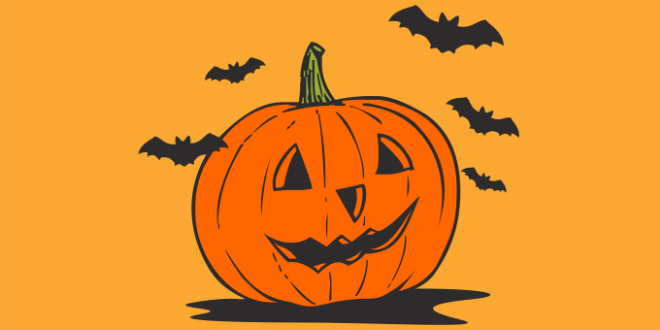Halloween gets more and more popular in the United States every year, based on the amount of money spent on it.
Shopping for Halloween – costumes, candy, house decorations, parties – is expected to reach record heights this year.
U.S. consumers will spend $12.2 billion on Halloween-related items in 2023, well above the $10.6 billion spent last year, which was a record, according to the National Retail Federation in Washington, D.C.
Seventy-three percent of the population plans to participate in at least one Halloween-related activity this year – going to a party, trick-or-treating, or taking their children trick-or-treating – among other possibilities. That’s up from 69 percent last year.
“More Americans than ever will be reaching into their wallets and spending a record amount of money to celebrate Halloween this year,” said Matthew Shay, the federation’s president and chief executive officer, in a statement. “Consumers will be shopping early for décor and other related items, and retailers are prepared with the inventory to help customers and their families take part in this popular tradition.”
Sixty-eight percent of those surveyed said they plan to decorate their yard with ghosts and goblins this year, and 53 percent said they will wear a costume at least once. Thirty-two percent said they plan to host or attend a Halloween party, and 28 percent said they will take their children trick-or-treating.
Consumers said they expect to spend a record $108,24 on Halloween this year, up from $102.74 two years ago. The greatest increase in spending is expected to happen in costume sales: 69 percent of those surveyed said they plan to buy a costume this year, and total spending in that category is expected to reach $4.1 billion.
That’s $500 million more than what was spent on costumes last year, and the most ever spent in one year.
Although it’s nothing like Christmas, which generated $936.3 billion in spending last year, Halloween has always been strong for retailers. But it’s probably never been as strong as it is now.
“With expanded offerings, earlier-than-ever availability, and consumers seeking a fun environment for themselves and their families, this year’s holiday spending looks frightfully good,” the federation states in a separate analysis that studies why Halloween spending has gone “over the top” during the past few years.
In 2005, U.S., consumers spent $3.3 billion on Halloween, according to statista.com, a German website that has more than one million statistics on 80,000-plus topics worldwide. Five years later that number reached $8 billion, and by 2017 U.S. shoppers spent $9.1 billion on Halloween.
Total Halloween spending in the United States reached $10.1 billion in 2021, the first time that category reached double digits.
One reason for that spending increase over 20 years or so is that Halloween is no longer strictly for kids. At some point – and it’s difficult to say exactly when and why this happened. – Halloween became an event for grown-ups as well.
Rather than being only about youngsters collecting candy door-to-door the night of Oct. 31, Halloween is now a month-long event that includes parties, elaborately decorated yards, and ‘“pop-up” stores dedicated exclusively to Halloween that open around Labor Day.
Two of those, Halloween City, which is owned by Party City, and Spirit Halloween, are well-represented throughout the Inland Empire, said Brad Umansky, president of Progressive Real Estate Partners in Rancho Cucamonga.
“I think people are always looking for different forms of recreation, and ways to have fun, and retailers are very good at recognizing those kinds of things and capitalizing on them,” Umansky said, “The growth in Halloween has been very good for retail. It’s made a lot of money, and it’s brought a lot of people into stores.”
Most of the “pop-up” stores have their sites picked out – usually an empty supermarket or other retail building that’s not in use – and their leases in place by the end of June, according to Umansky.
“They don’t use an entire store, just the front, but they do have to lease the whole site,” Umansky said. “It’s a good deal for the property owners because if you don’t have a [permanent] retail client lined up by June, you probably aren’t going to get one in time for Christmas. And the most important thing is to fill the space.”
Progressive handles two or three Halloween specialty stores a year, with site location and lease negotiations starting in the first quarter, according to Umansky.
A temporary store usually covers about 10,000 square feet. Ideally, space is found next to or near a freeway for better visibility.
“A lot of retailers, like Costco and Target, that you might think wouldn’t get into Halloween that much have really gotten into it lately, and it’s brought a lot of people into their stores,” Umansky said.
Costumes still tend to dominate the market, and so far this year the costumes generating the most sales at Halloween City at Canyon Crossings in Riverside are Barbie, Super Mario, and Ghostface from the Scream murder mystery-slasher movies, said Mariah Luna, a key holder employee at the store.
The store at 2250 Canyon Springs Parkway opened Sept. 8 and will stay open for a few days after Halloween for clearance sales, Luna said.
“It’s been here for at least 10 years and it’s always done well, and we’re getting a lot of foot traffic this year,” Luna said. “We get a lot of adults. A lot of times they’re with their kids but other times they’re by themselves. They like the decorations, the decor of Halloween. They’re interested in more than costumes.”
 IE Business Daily Business news for the Inland Empire.
IE Business Daily Business news for the Inland Empire.


